Trondheim, 09.02.2021 – Scientists working under the umbrella of the EU project ETHNA System have identified a comprehensive overview of good governance practices towards responsible research and innovation (RRI) in Europe.
The partners of the EU project ETHNA System have presented a literature review and state of the art description mapping examples of good governance of research and innovation (R&I) in European Higher Education, Funding and Research Organisations. “The findings form an essential basis for advancing our goal of developing a governance structure characterised by transparency, participation and co-responsibility”, said Elsa González Esteban, project coordinator and professor of the Department of Philosophy and Sociology of the Universitat Jaume I de Castelló (UJI).
The 82-page “Report on the state of the art and best practices” is the first publication of the project consortium involving ten partners from eight countries. Researchers at the ETHNA System partner institution Norwegian University of Science and Technology are the main contributors, in collaboration with project partners at UJI and Fundación Española para la Ciencia y Tecnología.
The report provides a comprehensive overview of governance theory and practices in the R&I sector related to the concept of Responsible Research and Innovation (RRI). The report is based on findings from a review of the RRI literature, with a particular focus on the governance of research and innovation processes, a mapping of good governance practices in the research and innovation sector related to RRI in Europe, and interviews with 22 European-based experts on R&I governance in the area of RRI, or RRI-related topics. The purpose of the report has been to present some of the governance options – or building blocks – available when constructing the ETHNA system, both conceptually and practically speaking.
The selection of examples of governance practices in the R&I sector related to RRI has been guided by Arie Rip’s conception of de facto governance, which proposes that governance is constituted to a large degree “by bottom-up actions, strategies and interactions … [that] add up to outcomes at the collective level which function as governance arrangements”.
Following this approach, the consortium identified a broad variety of governance practices.
Applying the governance framework of the EC-funded project Res-A-Gora, the authors organised identified cases under the following three governance themes: ensuring quality of interaction, positioning and orchestration, and developing supportive environments.
Each of the governance themes are divided into three parts, which are referred to in the report as governance modules. The concept of governance modules was chosen to emphasise the idea that the governance themes can be understood as building blocks, which one can pick and choose from when constructing the ETHNA governance system. The cases organised under each module are meant to serve as an inspiration when reflecting on how a module could be adapted to a given institutional context.
The report does not indicate which of the selected cases qualify as good governance practices for the purpose of constructing the ETHNA system. However, the authors suggest that a selection of relevant practices could be guided by the overarching quality criteria for good governance in the R&I sector that underpin the ETHNA System project, which are those of ethical and effective.
Informed by Habermas’ theory of communicative action, an ethical governance system is defined here as one that promotes and facilitates on the one hand the inclusion of those immediately affected by it (i.e. R&I actors) in processes of discursive justification of the way in which the governance system is organised, and second, the inclusion of stakeholders (citizens, end-users, non-governmental organisations, business representatives, policy makers) in processes of critical examination and discursive justification of possible scenarios and potential impacts generated by research and innovation processes.
In addition to being ethical, the ETHNA System project holds that to qualify as good an R&I governance structure must also be effective. Informed by governance theory on public innovation, an effective governance structure in this context refers to one that accommodates and facilitates the form that R&I activities often take, namely the form of diverse, complex and dynamic networks.
The report is part of the project’s work package 2. Needs assessment, planning and implementation of ETHNA System are the upcoming tasks that will be realised in the next two years.
Download the report
Image copyright: Skylark1952 – Freepik.com / BIOCOM



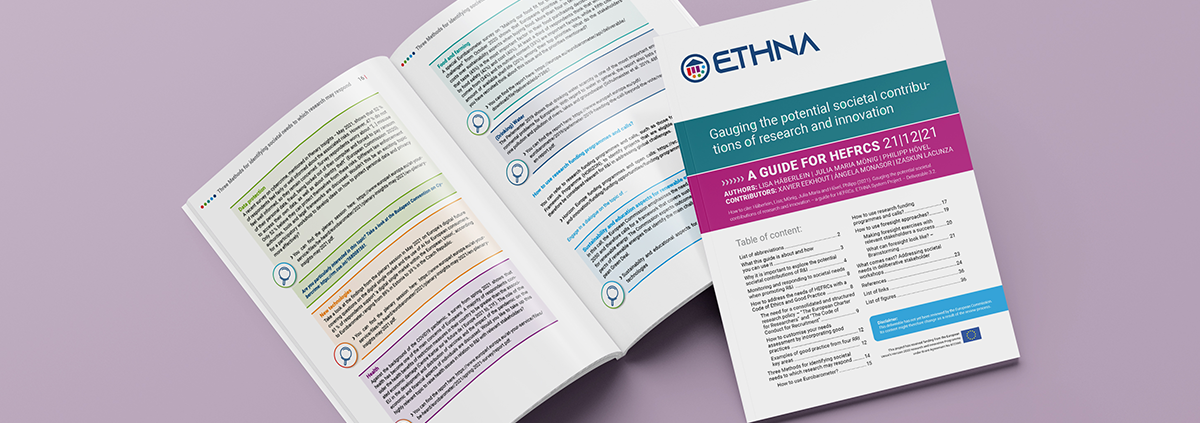
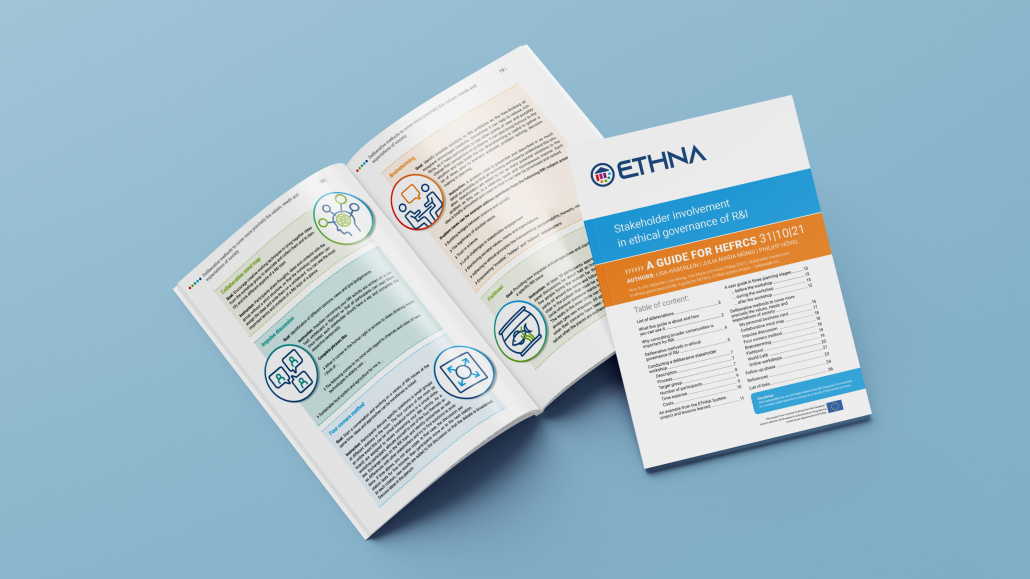

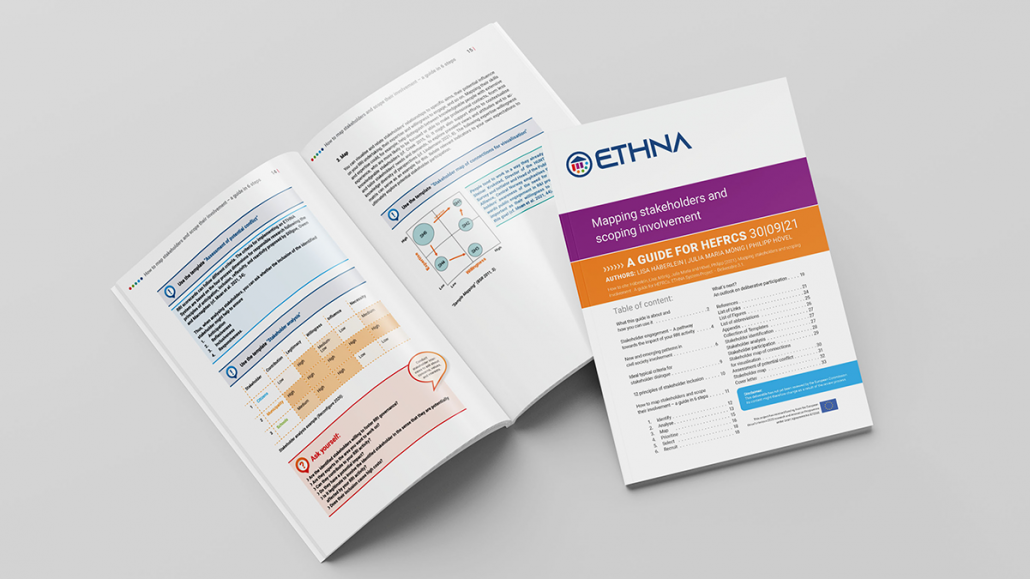
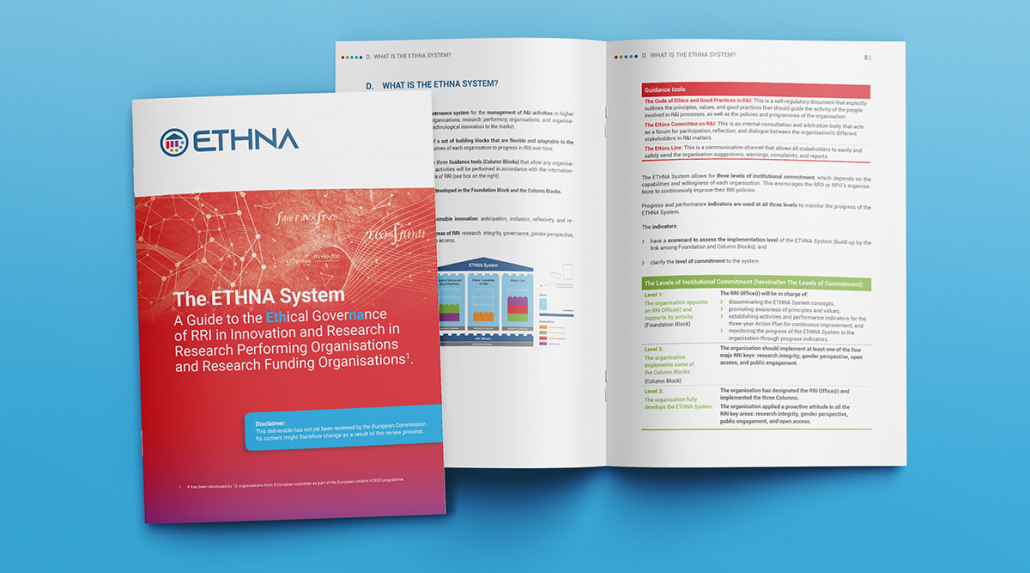

 loginueve/Pixabay
loginueve/Pixabay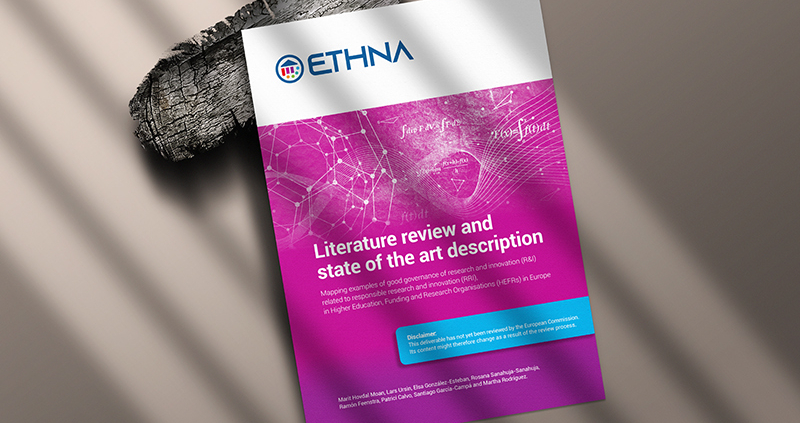 Skylark1952 - Freepik.com / BIOCOM
Skylark1952 - Freepik.com / BIOCOM